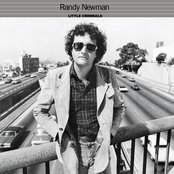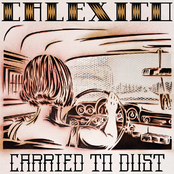Can any of the genealogists or local history buffs who read this blog help with this one? David Evans has found the following image doing a Google Image search. We’re wondering if the farm mentioned first might be in the Goblins Pit or Bullings Heath area, and maybe the names John Goodall or Joseph Plant could be researched for the actual location from historical records.
What is kind of interesting is the mention of the ‘lime work’ and the quantity of ‘Fine young timbers’. I can’t place the ‘Tenements’ however, so it’s wide open. Kings Hays, of course, still exists and covers now what’s known as the Fox Covey. The farm itself is the set of buildings on Salters Road adjacent the Fire Station. As to the advert itself, a surprising modernity of language makes it fairly easy reading, but what stood out typing it up was the Germanic capitalisation of all the nouns. Was that common, or is this text peculiar?

An interesting piece located by David Evans, via Google Images. Not sure of the source. Wondering if the first farm may be in Green Lane, possibly Grange Farm or Goblins Pit? Cheers to David for the spot.
1772 Jan 13. No 1575 (?)
To be SOLD
A Freehold Estate at Walsall Wood End in the Parish of Walsall, in the County of Stafford, consisting of a substantial Farm House, with convenient Out-buildings, and four Messuages or Tenements adjoining, with upwards of 90 Acres of Land, a valuable Lime Work, and a Quantity of fine young Timber. The Premises in the holding of John Goodall, and Joseph Plant, who will show the same.
Also to be sold, a Freehold Farm called King’s Haysin the Parish of Aldridge, in the County of Stafford, consisting of a good Farm House, with Out-buildings, and upwards of thirty Acres of Land, all lying within a Ring Fence, together with a Right of Common without Stint, belonging to the same, with 500 Oaks and Ashes & c. growing on the same Farm,which is in the Tenure of Henry Siddons, who will show it – For further Particulars apply to Mr. Micheal Goodall of Packington, or Thomas Richardson, in Lichfield.

 RSS - Posts
RSS - Posts










No joy on the Newspaper Archives for names or date, but no local papers shown for that era. However more are appearing at a steady rate.
Regards Pedro
Cheers, Pedro. Cracking support, as ever. I will reply to your Panoramio comments soon! Promise!
Thanks you, and cheers for the articles.
Ever grateful
Bob
Surely the King’s Hays mentioned is in the area of Lazy Hill – e.g. Kingshayes Road?
The emphatic capitalisation was certainly common in 18th century playbills.
I understand “messuages and tenements” is a catch-all legal device to cover all of the assets of a property, including rents. So there was a large farm house and four other houses. Can we pinpoint “Walsall Wood End”?
Unless there is someone out there researching these families I suspect we won’t find out who Messrs Goodall and Plant were. 1772 is too long ago; the names are not uncommon and they could have been 21 or 91. And if they were selling there might be no later record in the area.
A tantallising coincidence is that Daniel Littley and Rebecca were married in December 1772 and lived at Goblin’s Pit from the late 1700s (according to Charles Derry). The wood fits, but where was the lime works? Another possibility is west of Coppice Side where there were lime kilns and a Bighouse Farm (fits “substantial”?).
In an earlier post, Bob wrote that Woodside (later Coombe House) was built for William Harrison’s mine agent, who in the 1860s was Matthew Webb.
I thought I would find out about William Harrison, but drew almost a complete blank. The William Edward Harrison who was chairman of the board in 1933 lived at Wychnor Park and was awarded an OBE in that year, but, I can’t find him in censuses or online baptism records. He was a military man so could have been born anywhere in the Empire. Anyway, this was surely not the man who opened the company’s first mines.
The first mention of a mine agent in the census is a John Caddick of Clayhanger (next record to Goblins Pit) in 1841, aged 70 (thanks to Sue Lote). He also appears as a mine agent in 1851 at “Clanger”.
Matthew Webb was indeed a colliery agent in 1861, but the only locational information is “Brown Hills”. He was 47 and born Penkridge, married, 6 children, 2 servants. I found a relevant baptism, but no 1841 record. In 1851 he was an agent at coal works at Brownhills and in 1871 a colliery agent living at Engine Lane, Birch Coppice. He died on 4 Dec 1880 and left a personal estate of £655 13s. 6d. It appears his widow moved to Liverpool.
In neither census is there any ovbvious collection of large house and engine driver nextdoor, though in 1861 there was a colliery engine driver on the next page. Probably purely coincidental.
From scant information it appears that the first William Harrison mines opened in the 1840s, so it may be that the house at Birch Coppice was newly built for a mine agent and Webb landed the job.
I have not yet looked to see who was there in 1881 or subsequently, but this might confirm whether the agent lived at Woodside or The Coppice.
Going back to the 1825 (or was it 1835?) article, this said that the house was newly built. 30 acres is not very big; for example, on the 1884 mapping Birch Coppice woods cover 47 acres, so it’s hard to see how this estate could include houses in the north of Birch Coppice and the canal. The Cannock Extension Canal was opened in 1863 (ruling out the Grove Colliery area) and the Anglesey Branch in 1850, so we are probably looking for an estate on or straddling the main Wyrley & Essington Canal.
Not very productive, I’m afraid, but another piece of the puzzle, perhaps.
Hi Andy
very many thanks for your notes and for all your research. I have been told that in Hall Lane there were two farms..one a working farm,( still there) and the other ” just a farmhouse”..in the 1920s, 30s. I wonder if this was the one..and had been “lost” as a going farm when the canal was cut through in 1798ish?
I have never heard of a part of Walsall Wood being called Walsall Wood End.
kind regards
David
As mentioned above I searched the Newspaper Archives for Plant and Godall with no avail.
No mention either of Walsall Wood End, Woodside or Bighouse Farm.
Andy mentions above that he drew almost a complete blank on WE Harrison and It surprises me that, at fist look, I cannot find any mention to him personally, only in connection with the Colliery name.
I will continue to look and post if I find anything, the only snippet so far is from the Lichfield Mercury March 14 1913…
Nominations for Lichfield Poor Law Guardians…for Burntwood, Edial and Woodhouses was…
William George Arblaster, Coombe House, Brownhills, Gentleman.
Regards Pedro
Hi Pedro
many thanks…..
David
The Harrisons
Intrigued by the Harrisons and the inability to find any info, I am trying to piece some things together. Andy says….
“I thought I would find out about William Harrison, but drew almost a complete blank. The William Edward Harrison who was chairman of the board in 1933 lived at Wychnor Park and was awarded an OBE in that year, but, I can’t find him in censuses or online baptism records. He was a military man so could have been born anywhere in the Empire. Anyway, this was surely not the man who opened the company’s first mines.”
The book by Gerald Reece says William Harrison took over the lease around 1849, and so there could have been around 3 Harrisons!
I think I have some interesting info but would like to get the timelines sorted out. Around the Great War it seems that it could be the father of WE was WB Harrison, as they appear together in some Territorial records.
But would WB stretch back to 1849?
Anyway i have dug up some dirt about one of them that was standing for Parliament in 1900! I will see if Bob wants to start a special section dedicated to such upstanding members of your local community!
All the best Pedro
HI Pedro
many thanks…..yet again…for your patience and dedication. Greatly appreciated. The surname is still quite a well-known one. Possibly Crown pub connection…near the Rising Sun, Brownhills West c 1900 ?
David
Thanks, Pedro. Your are right: W E Harrison was the son of William Bealey Harrison. Briefly, WBH was High Sherriff of Staffs in 1897 and lived at Aldershaw House near Lichfield (London Gazette 2 Mar 1897). He was there with family in 1901, occupation businessman and in 1891, with WE born about 1876. In 1881 the family lived in Kensington, London; colliery owner employing 5 to 600 men. In 1861 WBH, colliery proprietor, was at Norton Hall where his brother John (barrister, not practising) was head of household (implies parents deceased?). In 1851, aged 13, WBH was a boarder at Appleby Grammar School. According to the snappily titled “Armorial families: a directory of gentlemen of coat-armour” 1905 (p152), he was born on 16 Jan 1838 the second son of William Harrison of Norton Hall … by Mary eldest daughter of John Bealey of The Hills, Bloxwich (hence Bealey’s Lane). WBH was christened on 14 Feb 1838 at St Matthew, Walsall, son of William Harrison and Mary Bealey (IGI). William Harrison married Mary Bealey Stanley on 19 Dec 1825 at St Matthew (IGI). WBH died on 23 Mar 1912 leaving £200,820 18s 7d (Probate Calendar).
So where were they all before 1851? Where were they in 1871? British History Online says Hagley Hall, Rugeley, was sold in 1864 to William Harrison, the local colliery owner, and in 1878 to the 3rd Marquis of Anglesey. Not in 1871 census, though.
I still cannot find anything else about the “original” William Harrison.
HI Bob
a very big thankyou to Andy, please. Is there anything still to be of Hagley Hall near Rugeley?
cheers
David
Looks like it was demolished in the 1980s, though it appears some features of the grounds remain (I’ve done no detailed research, but a quick www search finds some helpful results).
Here is something from 1900!
Sir Courtenay Warner was MP for Lichfield Division of Staffordshire from 1896 until 1922.
In October 6th 1900 the Tamworth Herald reports on the Election addresses of Warner and Captain Harrison.
At the meeting in support of Warner the first mention was of the settlement of South Africa and how the Balfour Government, with the largest majority in history, had practically done nothing.
Warner was proposed as a better candidate than Harrison. Prices of food had gone up, cotton mills and furnaces were being closed, and increased taxation had meant a reduction in wages. The inspectors of mines were proposing more precautions to prevent accidents, but who should bear the cost, employee or workmen? Who would be more likely to be on the side of the workmen Warner or Harrison? (Warner and applause).
Mention was made about the Compensation Act, Harrison had got his men to contract out, and therefore receiving less than miners in Warwickshire. It was said that Warner had always voted for the working classes.
Mr Alldritt considered Harrison’s claims. If ever there was an inopportune time for a colliery proprietor to present himself as a candidate it was now. He was the Chairman of the Association of Colliery Proprietors, and the high price of coal had been manufactured, having to pay something like a sovereign for a ton of coal. How could there be affection for Harrison who took part in these proceedings?
Warner remarked that Harrison never said anything himself but followed the speeches of the leaders of the Tory Party.
At the meeting for Captain Harrison the Chairman, who had known him for many years, introduced Harrison as a very large employer of labour in Staffordshire. He also said that not many knew that one of Captain Harrison’s seats was Chartley Castle. He spoke of the processions through Tamworth of the men in Khaki going to maintain the integrity of the British Empire. Harrison would see the interests of England were placed on the right basis.
Harrison had a mixed reception of cheering and hooting continuing for some time. He was a Staffordshire man and it should be a Staffs man to represent them. He said that he had been in South Africa twice and that Kruger had forced the war on this country.
On home affairs he said that trade had never been so good, and mentioned the government’s Workmen’s Compensation Act as being the most beneficial that could be passed in the interests of the working classes. (You contracted out, laughter, hooting and applause).
There was confusion at the end of the meeting when several persons wanted to be allowed to ask questions. One elector managed to ask Harrison if he was in favour of the Miner’s Eight Hour bill, to which he answered in the negative. The questioner then asked if he was in favour of the Labourers’ Compensation Bill, to which he answered that he was in favour of any Bill that the Government may bring in. The elector then remarked that Harrison was more in favour of putting 2 shillings on a ton of coal. (cries of “contracting out is more in his line” and uproar.)
All the best Pedro
A little info on WB (died 1912) andWE Harrison can be found at this site concerning the Territorial Force in Staffs (1908-1915)…
http://etheses.bham.ac.uk/14/3/Andrew_Thornton_Thesis.pdf
…Captain W.B. Harrison, the owner of The Cannock Chase Colliery Company, who not only offered to raise the new unit from his employees but also offered his family’s ancestral home, Norton Hall in Norton Canes, to the Territorial Force Association for use as its Drill Hall…
…To overcome this problem (recruitment) the officer commanding the 2nd North Midland Field Company, Royal Engineers, Major William Harrison, began his recruiting among the employees of his family’s collieries. Among the first men who joined the Company were miners employed at the Cathedral and Grove Pits at Brownhills. Harrison also used the novel technique of ensuring that any men seeking work at one of his collieries would only be employed on condition that they enlisted in the Territorials…
(seems a little like blackmail to me!)
All the best Pedro
HI Bob
this is a wonderful piece of research ! Many thanks to Pedro and Andy for their contributions. Another unique piece of local history is being uncovered by these two kind gentlemen!
The mention of South Africa brings my Great Uncle Levi’s exploits to mind!
kind regards
David
HI Bob
for Pedro, please. A special thank you for the link to Andrew Thornton’s thesis as this gives me so much additional info about my Great Uncle Levi .. mentioned in my article; “Levi; a forgotton hero,” some while ago….I visited Hill 60 and the Messines memorials last June. Some of the huge mine craters still remain to this day! Interesting to see in the thesis account that some good Brownhills ladies collected a large quantity of cigarettes to send to the Staffs soldiers at the front!
cheers
David
More on the Harrison Family can be seen in the comments under… The white heat of technology…
http://brownhillsbob.com/2012/04/02/the-white-heat-of-technology/#comment-8060
Regards Pedro
Hi Pedro
from an old friend in Norton Canes, from a long-established family there ;-..Harrison’s military promotion was a direct result of the number of “recruits” to the Territorial Army he “encouraged”, Not by his ability or military prowess.
cheers
David..
Thanks David,
So Captain Harrison was a bit of a Captain Mainwaring!
All the best Peter
Could he have been the model?